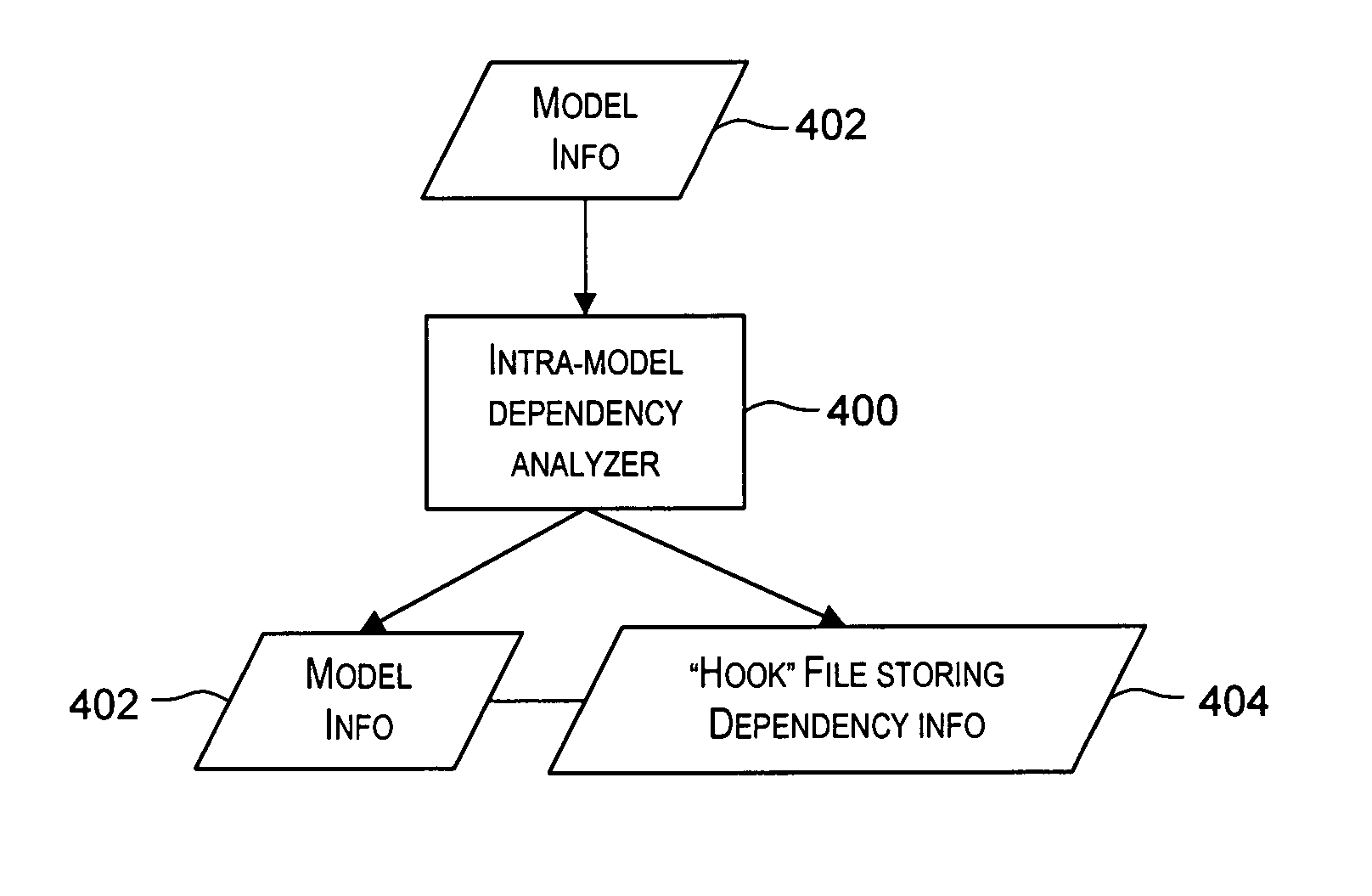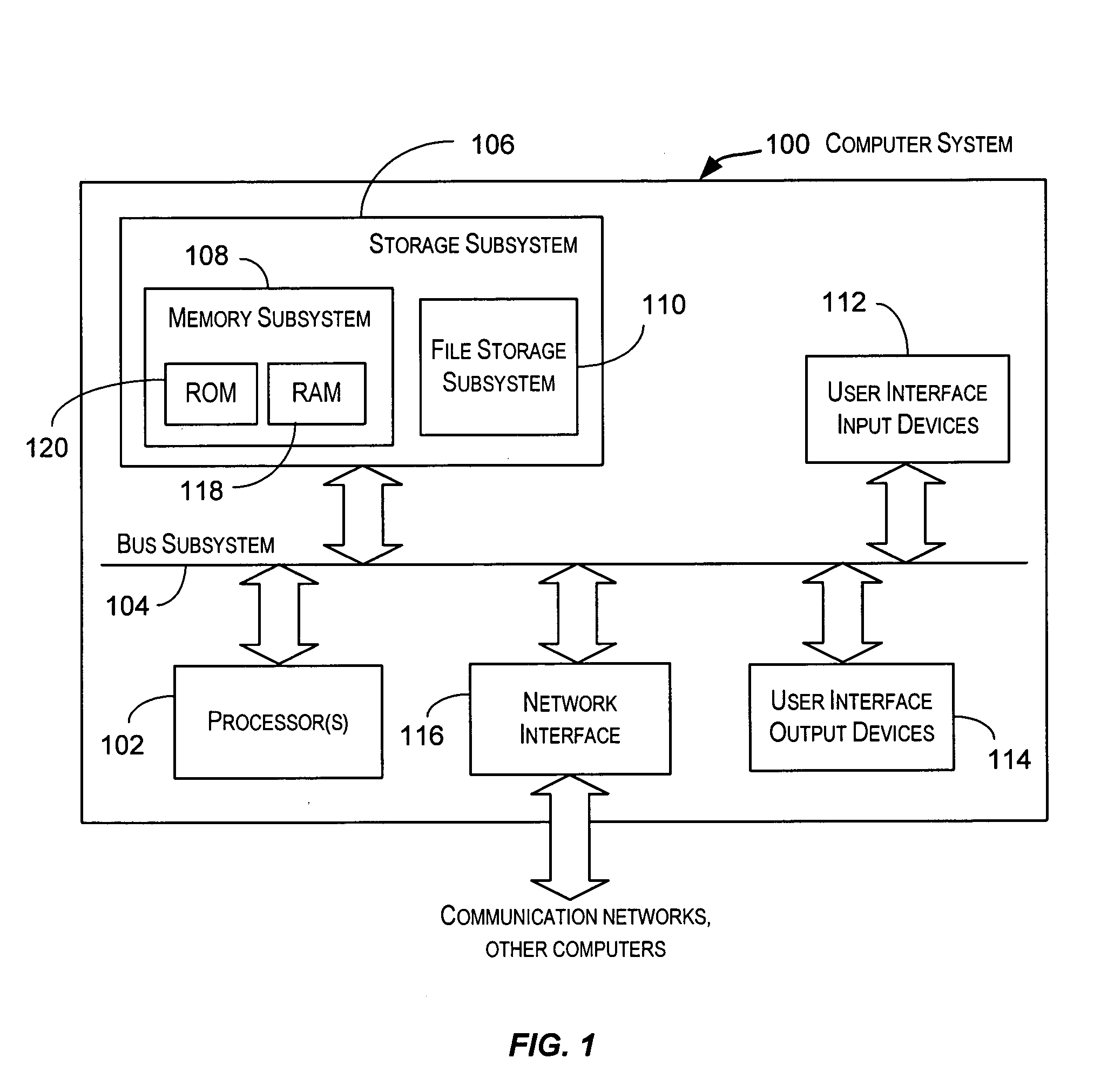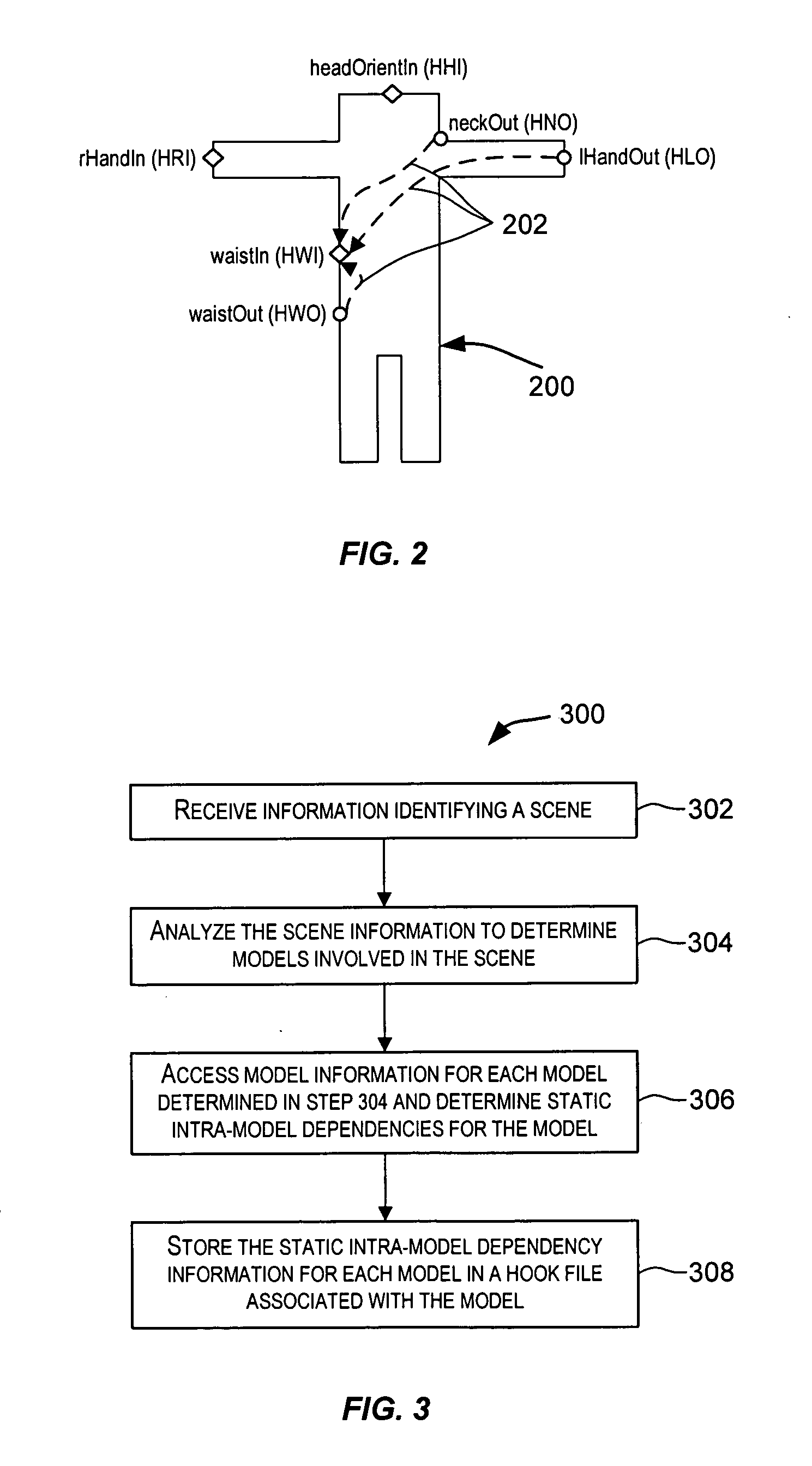Storing intra-model dependency information
a dependency information and model technology, applied in the field of computer generated imagery (cgi) and animation, can solve the problems of increasing the complexity of scenes in animated films, the inability of animators' computers to load and process all the models involved in scenes, and the inability to render scenes in a manner that is influenced by the complexity of scenes
- Summary
- Abstract
- Description
- Claims
- Application Information
AI Technical Summary
Benefits of technology
Problems solved by technology
Method used
Image
Examples
example
[0097] This section uses an example to describe the process of unrolling a proxy graph to produce a linear ordered list of nodes and reordering of nodes in the ordered list to minimize the number of clusters of nodes representing inputs or outputs of the same model (referred to as nodes belonging to the same model) according to an embodiment of the present invention. The example is not intended to limit the scope of the present invention as recited in the claims. The proxy connectivity graph depicted in FIG. 6 is used to illustrate the example.
[0098] (1) Obtain a Valid Linear Ordered List (Valid Linearization)
[0099] The proxy connectivity graph (depicted in FIG. 6) is unrolled to generate a linear ordered list of nodes. The unrolling is performed such that the invariant condition (that all nodes that a particular node depends upon appear in the ordered list before the particular node) is satisfied. In one embodiment, all proxy nodes of the proxy connectivity graph are iterated thr...
PUM
 Login to View More
Login to View More Abstract
Description
Claims
Application Information
 Login to View More
Login to View More - R&D
- Intellectual Property
- Life Sciences
- Materials
- Tech Scout
- Unparalleled Data Quality
- Higher Quality Content
- 60% Fewer Hallucinations
Browse by: Latest US Patents, China's latest patents, Technical Efficacy Thesaurus, Application Domain, Technology Topic, Popular Technical Reports.
© 2025 PatSnap. All rights reserved.Legal|Privacy policy|Modern Slavery Act Transparency Statement|Sitemap|About US| Contact US: help@patsnap.com



